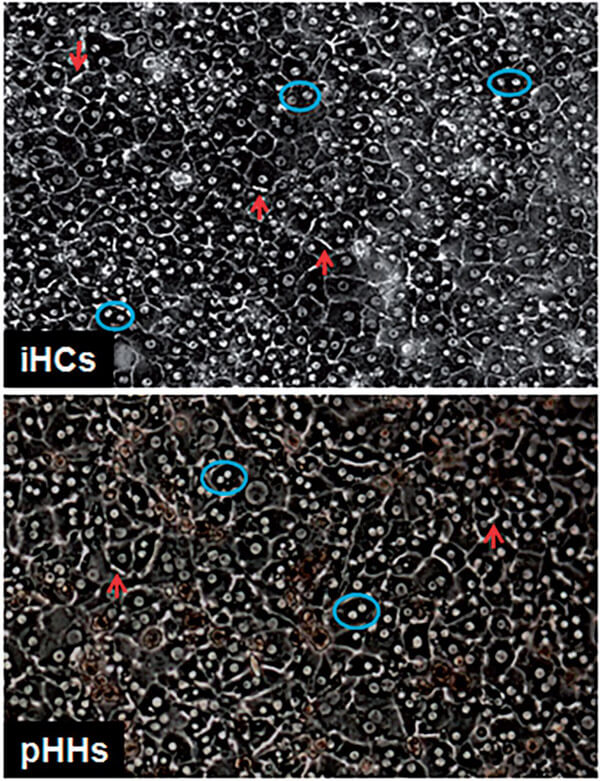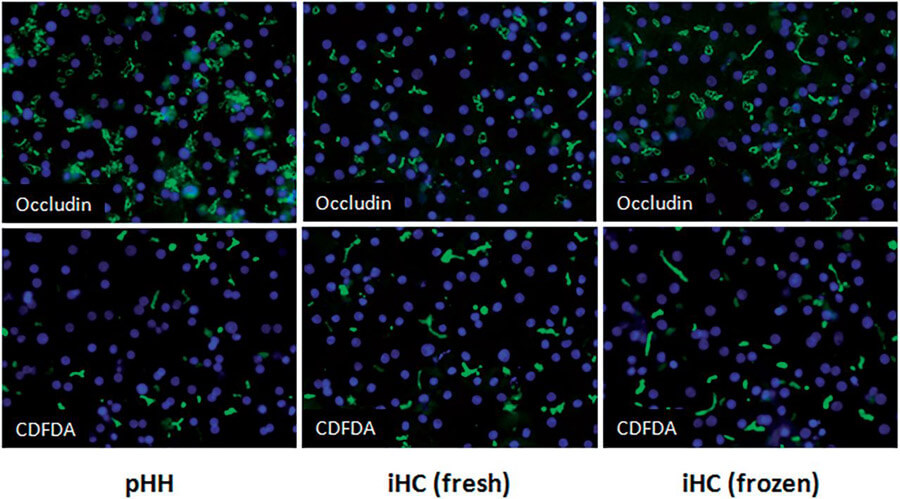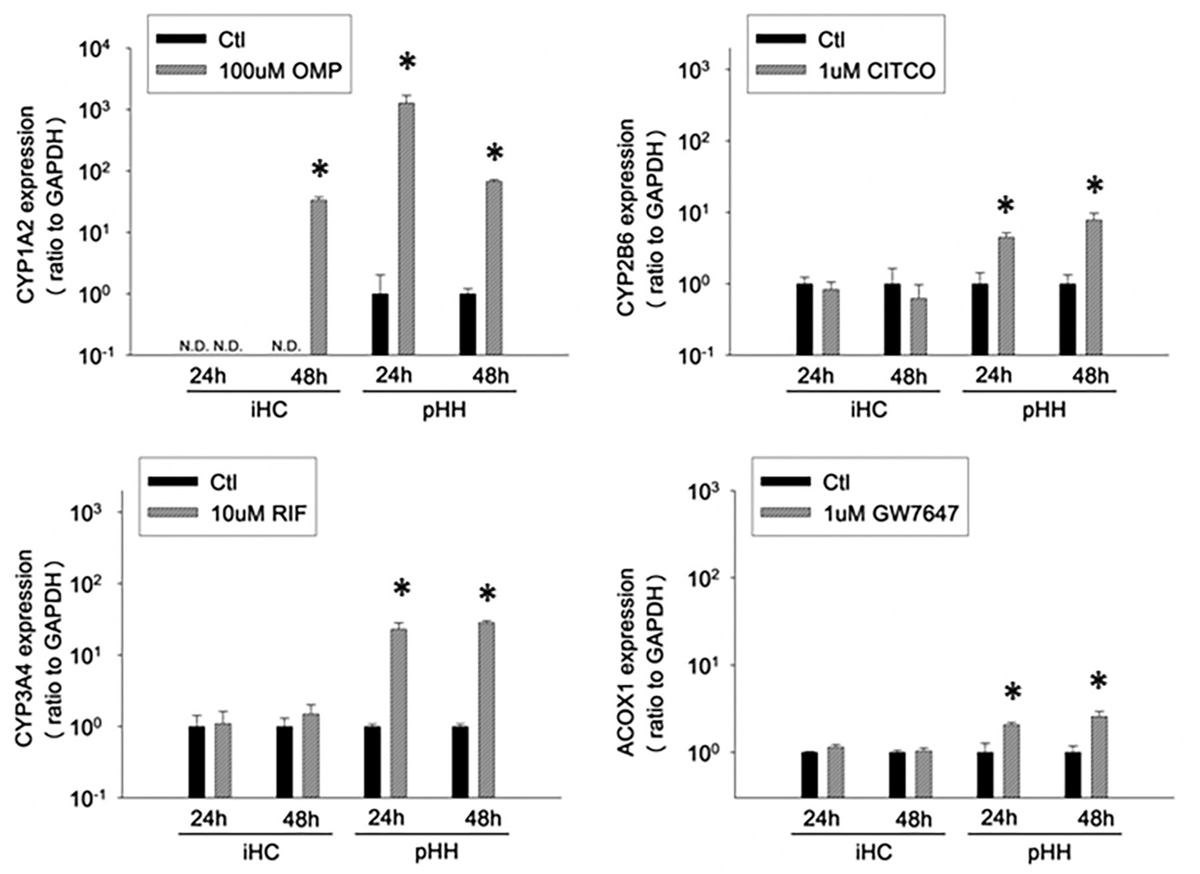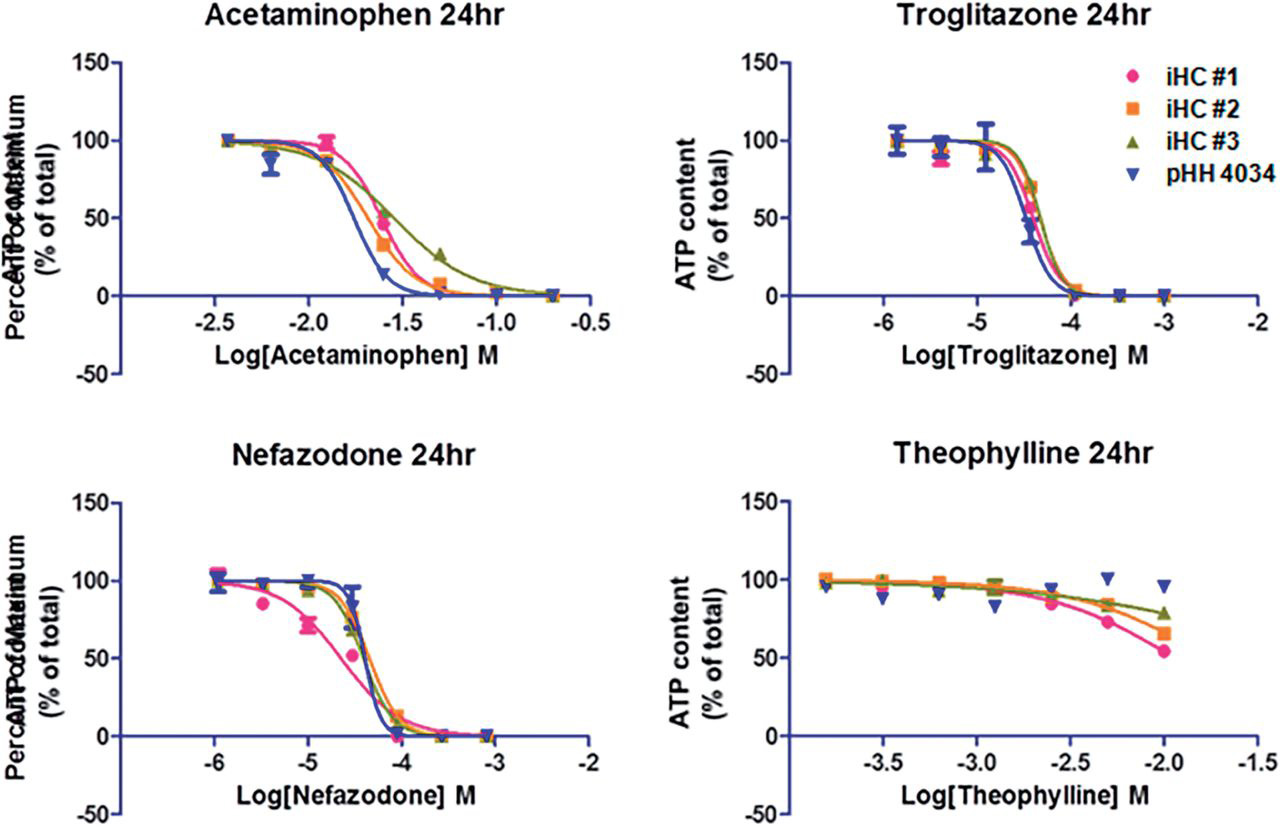Human iPSC-derived Hepatocytes
- Specification
- Background
- Scientific Data
- Q & A
- Customer Review
Studies in the field of hepatology is limited by the incomplete recapitulation of all major aspects of human hepatic metabolism in most established models. This restricts our ability to study the molecular mechanisms underlying hepatic diseases, and leads to insufficient evaluation of toxicology during drug development, resulting in tremendous unnecessary costs for the pharma industry.
Animal models differ in their metabolism compared to the human system, while primary human cells dedifferentiate rapidly and are not suitable for long-term culture. To overcome these obstacles, several protocols for in vitro differentiation of pluripotent stem cells into hepatocytes have been established. These cells are currently used for modeling inherited and acquired diseases, and to test for drug efficacy and toxicity.
Disease Modeling
Disease modeling is an attractive approach to understand the molecular pathway involved in the pathogenesis of liver diseases. Animal models of disease still represent the best way for biomedical research, but the possibility to use patient-derived-iPSC organoids could improve our knowledge regarding the mechanisms that lead to the unique disease phenotype in humans. Moreover, after the discovery of an "easy-to-use" gene editing platform as CRISPR/Cas9, it is possible to introduce or revert specific mutations to replicate the physiopathology in liver organoids.
Metabolic Studies
The most common application of iHCs for in vitro drug metabolism and pharmacokinetics (DMPK) studies is to determine the potential of drug-drug interaction (DDI) by inducing gene expression of various CYP450 enzymes. The amount and activity of these enzymes are known to increase when cells are exposed to certain chemical substances. However, an increase in the activity of a particular P450 enzyme might also affect a different drug in a patient's regime, leading to a DDI that could impact the efficacy and safety of more than one drug. Regulatory agencies require an analysis of the DDI potential in hepatocytes for CYP3A4, CYP1A2, and CYP2B6, which indicates whether a clinical DDI study is required.
Toxicology Screening
Hepatotoxicity is registered as one of the major causes of termination of drug development process. At present, primary human hepatocytes (pHHs) are the most widely used in vitro model for evaluating hepatotoxicity, however, the availability of pHHs is low since they are isolated from patients undergoing liver transplantation. Hence, hepatocytes derived from human induced pluripotent stem cells (hiPSCs) are of major interest for scientists as an alternative to pHHs for toxicity testing and drug screening due to their capability of self-renewal. It is the hope that iHCs will help to shed new light on pharmacological and toxicological studies due to their genetic and environmental diversity and the ability to establish stable lines from both healthy and diseased individuals as well as the possibility of gene editing makes them an attractive alternative to pHHs.
Culture of iHCs and pHHs
Fresh iHCs and pHHs were plated and cultured in a sandwich configuration following standard methods commonly used for compound testing with primary cells. Phase-contrast light microscopic images collected 3 days after plating showed typical cuboidal morphology, high cytoplasmic-to-nuclear ratio, multiple and prominent nucleoli, evidence of binucleated cells, and formation of bile canaliculi between adjacent cells.
 Fig. 1. Morphology of iHCs and pHHs after 3 days in culture (Lu, Jingtao, et al., 2015).
Fig. 1. Morphology of iHCs and pHHs after 3 days in culture (Lu, Jingtao, et al., 2015).
The formation of tight intercellular junctions and bile canaliculi were visualized by the fluorescent immunostaining of occludin and CDFDA uptake and compartmentalization, respectively. Monolayer cultures of fresh and frozen iHCs had qualitatively similar staining for both occludin and CDFDA as cultures of pHHs, indicating that they exhibit similar capacities to form these canalicular domains and junctional connections.
 Fig. 2. Development of cell polarity, junctional complexes, and functional bile canaliculi in cultures of iHCs and pHHs (Lu, Jingtao, et al., 2015).
Fig. 2. Development of cell polarity, junctional complexes, and functional bile canaliculi in cultures of iHCs and pHHs (Lu, Jingtao, et al., 2015).
Basal CYP Enzyme Activities in Cultured iHCs
Specific activities for human microsomal CYP1A2, 2A6, 2B6, 2C8, 2C9, 2D6, 2C19, 2E1, and 3A4 were measured in 3-day-old cultures of iHCs (Table 1). Except for CYP2A6, iHCs from a single specific donor had measurable activities for all CYP isoforms tested.
Table 1. Basal activities for major CYP isoforms (Lu, Jingtao, et al., 2015).
| iHC | iHC | pHH | |||
| Enzyme | Substrate | Metabolite | pmol/min/Million Cells | pmol/min/mg Protein | pmol/min/mg Protein (Average (Min–Max)) |
| CYP1A2 | Phenacetin | Acetaminophen | 2.8 | 19.5 | 10.6 (0–50.0) |
| CYP2A6 | Coumarin | 7-Hydroxycoumarin | ND | ND | 47.0 (20.8–137.0) |
| CYP2B6 | Bupropion | Hydroxybupropion | 0.4 | 2.3 | 15.2 (0–100.0) |
| CYP2C8 | Paclitaxel | 6α-Hydroxypaclitaxel | 0.2 | 1.0 | 8.0 (6.3–9.8) |
| CYP2C9 | Diclofenac | 4-Hydroxydiclofenac | 3.8 | 26.1 | 111.5 (0–560.0) |
| CYP2C19 | S-Mephenytoin | 4-Hydroxymephenytoin | 1.4 | 9.9 | 17.5 (0–82.3) |
| CYP2D6 | Dextromethorphan | Dextrorphan | 1.3 | 8.7 | 20.5 (0–77.6) |
| CYP2E1 | Chlorzoxazone | 6-Hydroxychlorzoxazone | 26.1 | 180.2 | 38.3 (5.0–89.0) |
| CYP3A4 | Midazolam | 1-Hydroxymidazolam | 9.1 | 62.7 | 41.9 (0–253.0) |
Induction of Nuclear Receptor-mediated Gene Transcription
Cultures were treated for 24 or 48h with omeprazole (100µM), CITCO (1µM), rifampicin (10µM), or GW7647 (1µM) and induction of CYP 1A2, CYP2B6, CYP3A4, and ACOX1 was measured by qRT-PCR. All target gene levels were expressed as the ratio to GAPDH.
 Fig. 3. Functionality of xenobiotic nuclear receptors and induction of downstream gene expression in cultured iHCs and pHHs (Lu, Jingtao, et al., 2015).
Fig. 3. Functionality of xenobiotic nuclear receptors and induction of downstream gene expression in cultured iHCs and pHHs (Lu, Jingtao, et al., 2015).
iHCs Respond to Prototype Hepatoxic Agents
The cytotoxicity of prototype hepatotoxic agents was compared in cultures of iHCs or pHHs. After a 24h exposure, iHCs and pHHs showed similar sensitivity of cell viability (ATP content) toward acetaminophen, troglitazone, and nefazodone exposure, and similar resistance to theophylline exposure.
 Fig. 4. Cytotoxicity of acetaminophen, troglitazone, nefazodone, theophylline in cultures of iHCs and pHHs (Lu, Jingtao, et al., 2015).
Fig. 4. Cytotoxicity of acetaminophen, troglitazone, nefazodone, theophylline in cultures of iHCs and pHHs (Lu, Jingtao, et al., 2015).
iPSC-derived hepatocytes offer a more physiologically relevant model for drug development and toxicity testing compared to traditional cell lines or animal models. They have the potential to accurately recapitulate human liver function, metabolism, and drug responses, leading to more accurate and predictive results in preclinical studies.
iPSC-derived hepatocytes have shown comparable functionality to primary human hepatocytes in terms of drug metabolism, CYP enzyme expression, and bile acid production. They also offer the advantage of scalability, as they can be expanded and differentiated in large quantities without the need for donor availability or variability.
Yes, iPSC-derived hepatocytes can be used for disease modeling to study genetic liver disorders, hepatitis, and drug-induced liver injury. They also have the potential for personalized medicine applications, such as testing drug efficacy and toxicity in patient-specific hepatocytes to guide treatment decisions and optimize therapy.
Ask a Question
Average Rating: 5.0 | 1 Scientist has reviewed this product
Highly recommend!
I recently purchased iPSC-derived hepatocytes from Creative Bioarray and I must say I am very impressed with the quality of the cells. They arrived in excellent condition and performed very well in my experiments. The company also provided great customer service and was very responsive to any questions I had. I will definitely be ordering from them again in the future.
05 Nov 2023
Ease of use
After sales services
Value for money
Write your own review
- Adipose Tissue-Derived Stem Cells
- Human Neurons
- Mouse Probe
- Whole Chromosome Painting Probes
- Hepatic Cells
- Renal Cells
- In Vitro ADME Kits
- Tissue Microarray
- Tissue Blocks
- Tissue Sections
- FFPE Cell Pellet
- Probe
- Centromere Probes
- Telomere Probes
- Satellite Enumeration Probes
- Subtelomere Specific Probes
- Bacterial Probes
- ISH/FISH Probes
- Exosome Isolation Kit
- Human Adult Stem Cells
- Mouse Stem Cells
- iPSCs
- Mouse Embryonic Stem Cells
- iPSC Differentiation Kits
- Mesenchymal Stem Cells
- Immortalized Human Cells
- Immortalized Murine Cells
- Cell Immortalization Kit
- Adipose Cells
- Cardiac Cells
- Dermal Cells
- Epidermal Cells
- Peripheral Blood Mononuclear Cells
- Umbilical Cord Cells
- Monkey Primary Cells
- Mouse Primary Cells
- Breast Tumor Cells
- Colorectal Tumor Cells
- Esophageal Tumor Cells
- Lung Tumor Cells
- Leukemia/Lymphoma/Myeloma Cells
- Ovarian Tumor Cells
- Pancreatic Tumor Cells
- Mouse Tumor Cells